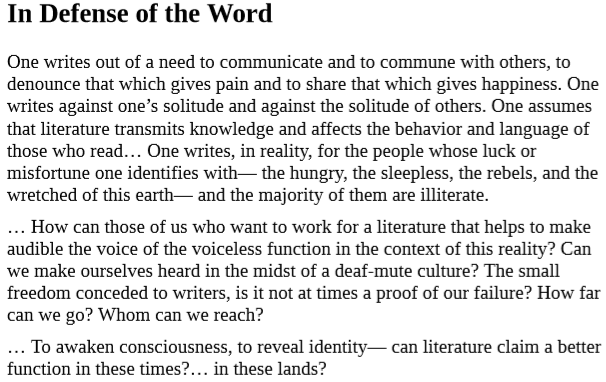

"Una bomba literaria que muy probablemente Obama no ha leído, pero que -seamos justos- en efecto tendría que leer.Imaginemos la escena: acomodado en su asiento del Air Force One rumbo a Washington, Obama toma el libro que le obsequió Chávez y, más por aburrimiento que por curiosidad, lo hojea al desgaire, lee un par de párrafos y, como le ha ocurrido a miles, queda atrapado por la un tanto engañosa pero siempre inquietante narración de Galeano. Eduardo Galeano ought to be a household name in this country.” This book, written more than thirty years ago, contains profound lessons for contemporary India. Galeano’s vision is unswerving, surgical and yet immensely generous and humane. “I cannot recommend this book highly enough. “A superbly written, excellently translated, and powerfully persuasive expose which all students of Latin American and U.S. It allows us to learn history, and we have to build on this history.” “This book is a monument in our Latin American history. All readers interested in great historical, economic, political, and social writing will find a singular analytical achievement, and an overwhelming narrative that makes history speak, unforgettably. An immense gathering of materials is framed with a vigorous style that never falters in its command of themes. Weaving fact and imagery into a rich tapestry, Galeano fuses scientific analysis with the passions of a plundered and suffering people.

These are the veins which he traces through the body of the entire continent, up to the Rio Grande and throughout the Caribbean, and all the way to their open ends where they empty into the coffers of wealth in the United States and Europe. Thus he is concerned with gold and silver, cacao and cotton, rubber and coffee, fruit, hides and wool, petroleum, iron, nickel, manganese, copper, aluminum ore, nitrates, and tin.

Rather than chronology, geography, or political successions, Eduardo Galeano has organized the various facets of Latin American history according to the patterns of five centuries of exploitation. It is also an outstanding political economy, a social and cultural narrative of the highest quality, and perhaps the finest description of primitive capital accumulation since Marx. debut a quarter-century ago, this brilliant text has set a new standard for historical scholarship of Latin America.


 0 kommentar(er)
0 kommentar(er)
